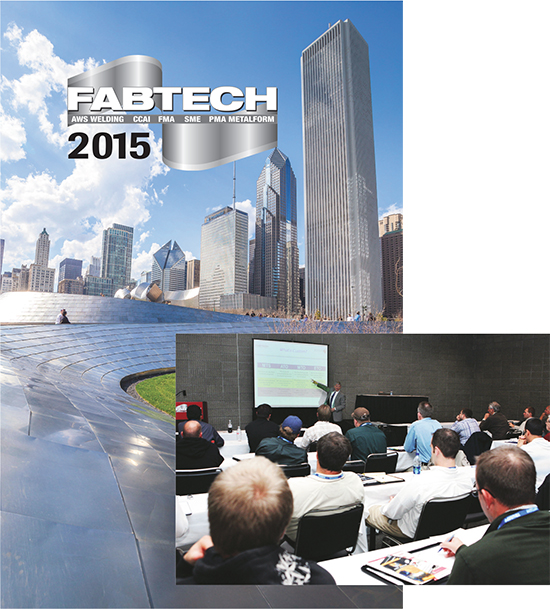Press Technology II
Advancements in Servo Technology: A Technical Brief on Different Servo Options in the Automotive Press Industry
This presentation will touch on the latest advancements in servo technology not only in traditional mechanical-press applications (transfer, blanking, progressive, tandem and asymmetrical presses), but also new advancements in hot-stamping technologies moving to mechanical servo.
Gorka Ibanez, Fagor Arrasate S. Coop
Servo Force, Velocity and Position
This presentation will address servo technology, enabling users to rethink the way they design their processes, tackle the challenges of higher-strength steels and other advanced materials, overcome part-quality problems, and reduce issues regarding press wear. Attendees will walk away with a better understanding of how to improve their processes, overcome current and future challenges, and optimize efficiency from their investment.
Darrell Quander, Hyson; Jim Landowski, Komatsu
1:30-3:30 p.m.
Value-Added Technology
The Advantages of In-Die Fastener Installation
By combining the fastener-installation process with the stamping process, the secondary operation of fastener installation can be eliminated. This increases productivity by improving throughput, reducing costs, reducing WIP and increasing quality. A full description of the individual elements of an in-die system and how they function together to form a complete system will be reviewed. This multimedia presentation includes detailed graphics, functional animations of the internals of the die tooling, and photographs of typical and unique projects.
Roger Patton, PennEngineering
Press Technology III
Advances in Hydraulic Press Technology—Case Studies
Multiple case studies with videos and samples of customer parts will be presented in a wide variety of applications, such as deep drawing, coining, punching, ironing, powder compaction and assembly. This informative presentation will explore the following core metalforming technologies: basic deep-draw technology including programmable cushion functions; high-speed servo hydraulics; quick die change; press automation including automated blank handling, servo transfers, indexing and robotics; and in-die sensing and data acquisition including OEE tracking.
Jon Schmidt and Jon Boardman, Neff Press, Inc.
Tuesday, November 10
8:00 a.m.-10:00 a.m.
Software Solutions for Metalforming II
Making Simulation a Reality: Mapping the Effects of the Production Stamping Environment to Computer Analysis
In this session, participants will identify common sources of variation in the stamping environment and relate them to the common inputs and assumptions made during the engineering process and stamping simulation. Participants will be introduced to methods and practices that can inform engineers as to the repeatability of the simulation results in reality and validity of the computer simulation.
Eric Kam, AutoForm Engineering GmbH
Error Proofing I
Die Protection and Sensor Basics
This session introduces attendees to the basics of in-die sensing for die protection. Starting with an overview of the many types of sensors commonly used for die protection, attendees will learn how to select and properly apply the right sensor for any application. Using real-world examples, the advantages and limitations of each sensor type, as well as tips and tricks on sensors selection, installation and wiring, will be highlighted.
Jim Finnerty, Wintriss Controls Group
10:30 a.m.-12:30 p.m.
Advanced High-Strength Steel (AHSS) Technology I
Production Applications of the Future Steel Vehicle (FSV) Program
Newly developed AHSS grades have increased in tensile strength, and innovative processes have made application of these grades more effective. Further, 3G (gauge, grade and geometry) design optimization has been applied to generate significant mass and cost savings. This presentation will review current production examples of lightweighting of body sheet components using these new technologies, which were first introduced in the FSV program.
David Anderson, Steel Market Development Institute
Error Proofing II
Advanced Die Protection and Error-Proofing, with Case Studies
This session will focus on the implementation of a serious die-protection and error-proofing program for metalforming and assembly companies. Included in this session will be the uses of electronic sensors for die protection, in-die part-quality monitoring and automatic self-adjusting tooling with servo motors.
George Keremedjiev, Tecknow Education Services, Inc.; Beth Roberts, Automatic Spring Products; Harold J. Didricksen, Kenmode Tool & Engineering; Bill Schell, Art Technologies; Dirk Holcomb, A Raymond Tinnerman
1:30–3:30 p.m.
Advanced High-Strength Steel (AHSS) Technology II
How Higher-Strength Materials Affect Pressroom Equipment and Die Maintenance
This presentation examines a number of different material types (aluminum alloys, high-strength steels and stainless steels) commonly used in commercial, automotive and aerospace products, and the effect they have on the stamping process. Guidelines for designing dies, selecting pressroom equipment, and implementing appropriate die-maintenance routines based on specific material properties and their influence on the stamping process will be discussed.
Peter Ulintz, Precision Metalforming Association
Die Material Coatings and Tooling for High-Strength Steel Stamping
Stamping dies for AHSS applications face a variety of challenges, including galling of the surface of drawing dies and cracked cutting edges of trim dies. At the same time, stampers must prepare dies quickly and efficiently to satisfy the timelines of new model launches. This session addresses solutions to these challenges, including new die materials, coating technologies and tooling technologies.
Tom Bell, Hitachi Metals
Error Proofing III
Quality Management for Press Shops: In-Die Process Validation, Post-Stamping Check Stations and Error
For management, quality engineers and supervisors in stamping operations, part quality can be a source of frustration. Teams need to identify quality issues early and adjust quickly so that they can have zero defects shipped to customer. This is readily accomplished through in-die process validation, electronic measurement and part tracking. Through real-world examples, we will discuss how press shops are successfully implementing 100-percent inspection of finished parts regardless of automation level.
Will E. Healy, III and Dave Bird, Balluff Inc.
Wednesday, November 11
8:00-10:00 a.m.
Lubrication Technology
Lubrinomics—The Science of Lubrication and Economics in Metal Stamping
Lubricants can make a major impact on the success or failure of a stamping operation. Understanding the different compositions available and how to best apply them to specific operations is important, to ensure the greatest success rates and process compatibility. Not all lubricants are created or perform equally. Determine how to evaluate different lubricants during a trial, learn industry best practices, and understand important metrics for overall success and improvement to the bottom line.
Steve Lowery, Tower Oil & Technology Co.
Understanding Chlorinated Paraffins in Metalforming Lubricants
Learn how extreme-pressure additives affect the workability of stamping lubricants. This session will cover the future of metalforming lubricants, government action on chlorinated paraffins, understanding the global regulatory system and the use of extreme-pressure additives in metalforming lubricants.
Steve Lowery, Tower Oil & Technology Co. and Jim MacNeil, Qualice LLC
10:30 a.m.-12:30 p.m.
Pressroom Safety and Performance
Installation Technology to Improve the Performance of Metalforming Presses
This presentation will explore the relationship between installation methods and their effects on machine productivity and the surrounding environment, using technical illustrations and case studies. The characteristics of a wide variety of isolators and mounting systems will be covered including elastomeric (rubber) and steel-coil spring systems.
Keith Leatherwood, Vibro/Dynamics Corp.
OSHA 1910.147—Control of Hazardous Energy, Risk Assessment and Alternative Control Measures in Stamping Applications
Providing a risk assessment allows employers to meet the requirements of OSHA’s “general duty” clause (5A1 of the act), which requires employers to keep the workplace “free from recognized hazards.” This presentation will provide guidance on the process and steps for performing a risk assessment for the overall safety of stamping machines, and to assist in the application of OSHA 1910.147 control of hazardous energy. Also explained are the additional benefits to be gained as a result of upgrading production equipment for use with alternative control measures as they apply to the control of hazardous energy.
Ted Sberna, White Horse Safety
1:30-3:30 p.m.
Eddy-Current vs. Variable-Frequency Drives
Eddy-current and variable-frequency drives have been employed for many years to provide variable speed control for machines. This session focuses on applications for mechanical metal-stamping/metalforming presses, and argues that eddy-current drive technology best serves applications for presses.
David H. Stroner, DSI Dynamatic
Industry-Related Terms: Alloys,
Blanking,
Case,
Coining,
Core,
Die,
Drawing,
Form,
Forming,
Hydraulic Press,
Model,
Surface,
Tensile Strength,
BlankView Glossary of Metalforming Terms
See also: Precision Metalforming Association
Technologies: Training
 The FABTECH 2015 Education Program provides valuable learning experiences for every member of your team. Technical sessions are presented by the Precision Metalforming Association (PMA), Fabricators & Manufacturers Association, Society of Manufacturing Engineers and Chemical Coaters Association International. Among the topics covered: cutting, finishing, forming and fabricating, management, job-shop solutions, automation and robotics, stamping, and tube and pipe. And, the American Welding Society presents a comprehensive lineup of welding education, including the Resistance Welding School.
The FABTECH 2015 Education Program provides valuable learning experiences for every member of your team. Technical sessions are presented by the Precision Metalforming Association (PMA), Fabricators & Manufacturers Association, Society of Manufacturing Engineers and Chemical Coaters Association International. Among the topics covered: cutting, finishing, forming and fabricating, management, job-shop solutions, automation and robotics, stamping, and tube and pipe. And, the American Welding Society presents a comprehensive lineup of welding education, including the Resistance Welding School.






 Podcast
Podcast
